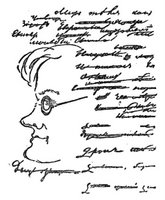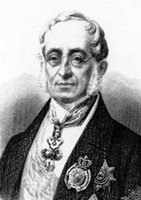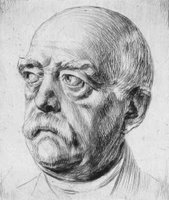THE PERFECT DIPLOMAT? SOME THOUGHTS ON JOAQUIM NABUCO'S AMERICAN EMBASSY,
1905-1910
1905-1910
"It is essential that a negotiator should be able to divest himself of his own opinion in order to place himself in the position of the Prince with whom he is negotiating. He should be able, that is, to adopt the other's personality, and to enter into his views and inclinations. And, he should thus say to himself-'If I were in the place of that Prince, endowed with equal power, governed by indentical prejudices and passions, what effect would my own representations make upon myself?'"
Sir Harold Nicolson, Diplomacy, 1939, p. 121.
On the 21st of this month, I was invited to give a talk at the American military academy at West Point at a conference dealing with the career of the late 19th / early 20th century Brazilian statesman, writer and diplomat, Joaquim Nabuco. Below is what I managed to come up with. Those who know me well, will recognize that this subject matter is not one that I am a specialist in by any means. Still, there was pleasure in doing some original research and delving into a topic not previously explored in any way. As per the subject of the paper: Nabuco comes across, in terms of a 'type' of diplomat, as being quite close to the French ideal of the 'famous writer as diplomatist' (Claudel, Leger, Giraudoux,Jusserand, Chateaubriand). Not a type, which either the Anglo-Saxon or the Germans and the Russians (with the exception of the great 19th century Russian writers Griboyedov & Tyutchev), are really familiar with. Without of course seeking to pigeon-hole this group, it would not be too far afield to say that as practitioners of diplomacy, the literary-type as diplomat, is about as far from the Freiherr von Holstein type of diplomat as one can imagine. Flattery in the pure Metternichian fashion appears to have been the preferred means of endeavoring to fulfill their duties. With that being said, please see below an abbreviated version of the paper which my talk was based upon.
Henry Kissinger in volume one of his memories recalls that in one of his meetings with the Chinese Communist leader Mao Tse-teng, that he – Kissinger stated that it was a happy state of affairs that there were no issues separating the United States from the Peoples Republic. As Kissinger frankly notes, Mao immediately disagreed with his guest, stating that the only reason that Kissinger was indeed in Peking was due to the fact that there were issues in dispute, requiring resolution between the Peoples Republic and the USA. Otherwise, Mao noted there was no point in Kissinger being in Peking in the first place.1 The historian who examines the diplomatic and other records between the USA and Brazil during Nabuco’s embassy in Washington, DC, will see certain echoes of the Kissinger-Mao exchange as they relate to Brazilian-American relations during the years that Nabuco was Ambassador to the United States. On the surface and indeed, if one were to dig deeper down, there were few if any issues separating the two countries during the years from 1905 to 1910. Examining minutely the diplomatic records from the American side, one sees that most of the day-to-day diplomatic cables deal with the most banal and mundane of concerns, such as for example, in April of 1905, the American Ambassador to Brazil, cabled the State Department that the American consul in Bahia had protested to the Brazilian authorities that a schooner called the ‘Oliveira’, was plying the Brazilian waters using a flag which seemed to be a carbon copy of the American flag. A ‘problem’, which until resolved seems to have occupied a considerable amount of the energies (such as they were) of the American embassy in Petropolis. 2
Considering these facts how does one explain the unusual position, and indeed impact that Joaquim Nabuco, had during his time serving as the first Brazilian Ambassador to the United States? First, I would lay stress on the sheer fact of the attractiveness of Nabuco’s character and personality on his American opposite numbers. It is quite evident in the numerous letters and other correspondence that Nabuco had with all three American Secretary of States: Hay, Root and Knox, as well as with Presidents Roosevelt and Taft. In part this mutual friendliness is due to the fact as mentioned above, that there were no issues in dispute between the United States and Brazil in these years. It is also due to the fact, that Nabuco, notwithstanding the fact that he had served previously as Brazilian Minister to the Court of Saint James, did not give himself airs of superiority, nor did he confine himself to the traditional roles of the diplomat, in the very different atmosphere of the United States. And, indeed, one can see in his correspondence during his embassy, that he was quite willing to go out of his way to ingratiate himself with his American hosts.3 Going off to places which one doubts that any chief of mission of the diplomatic corps in the United States voluntarily went at that point in time: Chicago, Buffalo, Saint Louis, et cetera. At one point in 1908-1909, Nabuco gave an impressive series of lectures at Yale, the University of Chicago, Vasser and Cornell. With only a bout of ill-health preventing him from going all the way to Wisconsin.4 Giving lectures and speaking to American civil society all for the purpose of spreading the gospel of Pan-Americanism & the commonality of Brazilian and North American culture and civilizations. A very good example of Nabuco at work in ingratiating himself with his American hosts was in 1908, when the American fleet, was on the Latin American portion of its around the world voyage, and about to enter the harbor of Rio de Janeiro; Nabuco writing hyperbolically in a personal letter to the American President Theodore Roosevelt: “what a great spectacle it shall be! For the first time the great bay will see a fleet worthy of it!” 5 Sentiments which could only have warmed Roosevelt’s heart. Nor was it the only time that he exchanged such exaggerated sentiments with his American counter-parts, another example being in a letter that he wrote to Roosevelt at the end of the latter’s term of office, telling Roosevelt that:
“I can assure you I will keep your letter as the highest decoration I could possibly receive. I need not repeat again my estimation of your figure in American history. It will sound loud, as the language of future always does in one’s own time. Thanking you for this token of your high benevolence towards one who prides in having served here throughout your second Presidential term.” 6
Of course, it was not Roosevelt, nor Taft, nor Knox, and, definitely not the ultra- anglophile John Hay, who Nabuco felt and interacted the most during his stay in Washington. It was of course, the Elihu Root, the Wall Street lawyer, turned Secretary of War and with the death of Hay just after the beginning of Nabuco’s service in the USA, Secretary of State, who Nabuco had the warmest of relationships. Indeed, according to Root’s authorized biographer, Philip Jessup, it would not be too strong to speak of a Nabuco-Root entente. 7 Certainly, Nabuco saw that Root was the one American official, who was most likely to reciprocate fully Nabuco’s own ideas of Pan-Americanism. As Root himself told an American Senator very early in his tenure as Secretary of State:
“The South Americans now hate us largely because they think we despise them and try to bully them. I really like them and intend to show it. I think that their friendship is really important to the United States and the best way to secure it, is by treating them like gentlemen. If you want to make a man your friend, it does not pay to treat him like a yellow dog.” 8
Words which were a far cry indeed, from say Hay’s references to ‘dagoes’, only one year earlier. Or for that matter Theodore Roosevelt’s more condescending ideas of the United States’ relations with the countries of Latin America.9 And, it is with this in mind, this unity of spirit between Nabuco and Secretary Root that saw Root, undertake the heading the American delegation to the Third Pan-American Congress in Rio in 1906. The very first time, may one add that a serving American Secretary of State, ever ventured outside of the United States. 10 Under the leadership of Nabuco, the Congress promoted a common & agreed understanding of Pan-American solidarity in the aftermath of the Venezuelan Crisis of 1902-1903. A crisis in which a tri-partite British-German-Italian fleet had for months blockaded and then bombarded the Venezuelan coast in a dispute over payment of sovereign debts owned by the government in Caracas to respectively London, Berlin and Rome. It was also Nabuco who not only ensured that Root was properly feted during his sojourn in Brazil, but, who continued to cajole the American Secretary of State, into assuming the role of what Nabuco referred, one year later as ‘the great leader’ of the ‘Pan American cause’. 11 And, to the extent possible, Root, reciprocated Nabuco’s friendship in policy terms. The best examples of which were that in 1907, when the United States endeavored to ban from the Pan American council, any government which did not have diplomatic representation in Washington, DC., Nabuco remonstrated with Root that:
“Supposing that one of our Nations has the misfortune of interrupting her diplomatic relations with the United States, should that Nation remain on that account outside the pale of the American Union, while you remained in it? You are too chivalrous to allow such inequality in international intercourse”. 12
Root of course relented under this protest from his friend. A friendship which continued even after Root left office at the beginning of 1909. Another example which comes to mind, is the ‘Panther incident’, of November 1905, when the German gunboat of the same name, violated Brazilian sovereignty in the state of Santa Catarina, by landing ashore and arresting a German deserter on Brazilian soil. As soon as the incident became known, Nabuco rushed to the State Department and requested that the United States take a friendly interest in the matter on Brazil’s behalf without necessarily de jure intervening. Something that Root quickly did. Nabuco also helped to inspire articles in the American press, attacking Germany over the incident. Which was eventually resolved to Brazilian satisfaction. 13
The nature of the Root-Nabuco alliance is perhaps best understood in a letter that Root wrote to Nabuco in November 1905, where the former stated:
“It is delightful to have here just at a time when formative progress seems possible a representative of the greatest South American republic, a man who thinks, who applies the philosophy of history to the possible conduct of every day and who has the sense of proportion which comes from having become familiar with international affairs from varying points of view”. 14
It is no wonder that when Nabuco passed away so suddenly in January of 1910, that Washington in a special mark of favor, almost without precedent, made available the Presidential yacht, the Mayflower to convey Nabuco’s remains to the Brazilian warship which had arrived to take the body back to Brazil. And, it was most fitting, that at the ground-breaking ceremony for the Pan-American building in Washington, DC, a building which Nabuco had invested both time and thought to, Root’s successor as Secretary of State, Philander Knox spoke for many when he said:
“One voice that should have spoken here today is silent, but many of us cannot forget or cease to mourn and honor our dear and noble friend, Joaquim Nabuco. Ambassador from Brazil, dean of the American diplomatic corps, respected, admired, trusted, loved and followed by all of us, he was a commanding figure in the international movement of which the creation of this building is part.” 15
ENDNOTES:
1. Henry A. Kissinger, The White House Years, p. 1060.
2. Ambassador Thompson to Hay, 4 April 1905, in Foreign Relations of the United States, 1905 (hereafter 'FRUS'), p. 97-98.
3. See for examples: Nabuco to Root, 29 March 1908, in Elihu Root Paper 1908, in Library of Congress (hereafter 'Root Papers' with the pertinent year). See also: Roosevelt to Nabuco, 17 May 1908, in Roosevelt Papers 1908, Library of Congress (hereafter 'Roosevelt Papers' with the pertinent year). And, Nabuco to Root, 23 October 1905, Root Papers, 1905; Nabuco to
Root, 14 December 1908, Root Papers, 1908; Nabuco to Root, 26 September 1908, Root Papers, 1908; Nabuco to Root, 23 January 1909, Root Papers, 1909.
4. Nabuco to Root, 18 February 1907, in Root Papers 1907.
5. Nabuco to Loeb [Roosevelt's private Secretary], 12 January 1908 & Roosevelt to Nabuco, 12 January 1908, in Roosevelt Papers, 1908.
6. Nabuco to Roosevelt, 19 December 1908, in Roosevelt Papers, 1908.
7. Philip Jessup, Elihu Root, Volume II: 1905-1937, p. 78.
8. Philip Jessup, Elihu Root, Volume I: 1845-1905, p. 469 (hereafter 'Root' with the relevant page number).
9. Jessup, Root, p. 468-471.
10. Ibid., pp.476-480. See also: Nabuco to Root, 25 November 1905, Root Papers, 1905.
11. See: Nabuco to Root, 29 March 1906, Root Papers, 1906 & Nabuco to Root, 5 April 1906, Root Papers 1906, Nabuco to Root, 3 August 1906, Root Papers, 1906. See also: Jessup, Root, pp. 478-483. Nabuco to Root, no date, 1907, in Root Papers, 1907.
12. Nabuco to Root, 28 January 1907 & Nabuco to Root, 1 February 1907, both in Root Papers, 1907.
13. Jessup, Root, p. 473.
14. Jessup, Root, p. 472.
15. Carolina Nabuco, The Life of Joaquim Nabuco. See also: Nabuco to Root, 8th September 1909, Root Papers, 1909.











0 Comments:
Post a Comment
<< Home